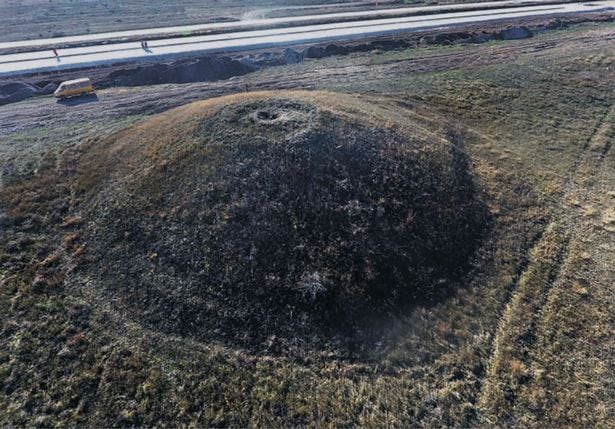Drahý kolego moc děkuju za všecky ty články sou ůžasný a pošlu ti zas náký žetony nic zaně nechci stačí mi ty články si frajer žese furt držíš stěma článkama držim palce kolego super fakt ahoj 
5000 year old skull surgery
Categories: Calendar , Nálezy nejenom s detektorem kovů ve východní Evropě
Archaeologists have found a 5,000-year-old skull showing signs of surgery. But the man didn't live long after the procedure. Scientists say it's an exceptional condition, however, as brain surgery was common in ancient times.
The skull found is rare for archaeologists because the man it belonged to is believed to have undergone brain surgery. Five thousand years ago, this may have been a fairly common procedure. The operation was performed with a stone scalpel. But the man eventually died in the process. But scientists say that often, surprisingly, people were able to survive brain surgery thousands of years ago.
"Just as today's surgeons have a set of surgical tools, ancient doctors had their equipment, but in the form of stone tools," said the Archaeological Institute of the Russian Academy of Sciences in Moscow.
The skull belonged to a man who died when he was about 20 years old. That he had undergone brain surgery was discovered by Russian scientists based on a 3D model they created of the skull they found. There are clearly visible traces of trepanation, a purposefully created hole in the head. It measured 140 by 125 millimetres. But the scientists say the operation was not actually successful and the man lived only a short time after the procedure was completed.
"This young man was unfortunately unlucky. Although there are many cases of survivors from ancient times, this time the procedure failed. We found no trace of the healing process. In fact, we are talking about a rarity, because most people in antiquity survived several trepanations," anthropologist Maria Dobrovolskaya stated.
Prehistoric surgeons used different types of stone blades. Scientists are confident about this because they have already examined many ancient skulls. Sometimes there are long linear marks or various straight grooves. Experts believe that trepanation was carried out in antiquity for both surgical and ritual purposes.
In some cases, it even led to the person being "changed" after the procedure. The goal of brain surgery in antiquity may have been to relieve severe headaches, heal a hematoma, repair a skull injury, or try to overcome epilepsy.
Research by Russian scientists suggests that prehistoric physicians performing primitive procedures of this kind usedused cannabis, magic mushrooms and even shamanic practices such as ecstatic dancing as anaesthetics to relieve pain.
The skull was found by archaeologists on a skeleton in a deep grave in a Scythian mound. The Scythians were members of a nomadic tribe that resided in Eastern Europe in ancient times. They are believed to have been of Iranian origin, and were the first to master mounted warfare. They had considerable military strength and managed to penetrate as far as the Carpathian Mountains and Transylvania.



Sources: www.mirror.co.uk, www.dailymail.co.uk
The article is included in categories:
- Archive of articles > Calendar
- Archive of articles > Archaeology > Finds and rescue research abroad > Nálezy nejenom s detektorem kovů ve východní Evropě
Post
Zajímavej článek, děkuju.
Pěkné čtení, díky.







